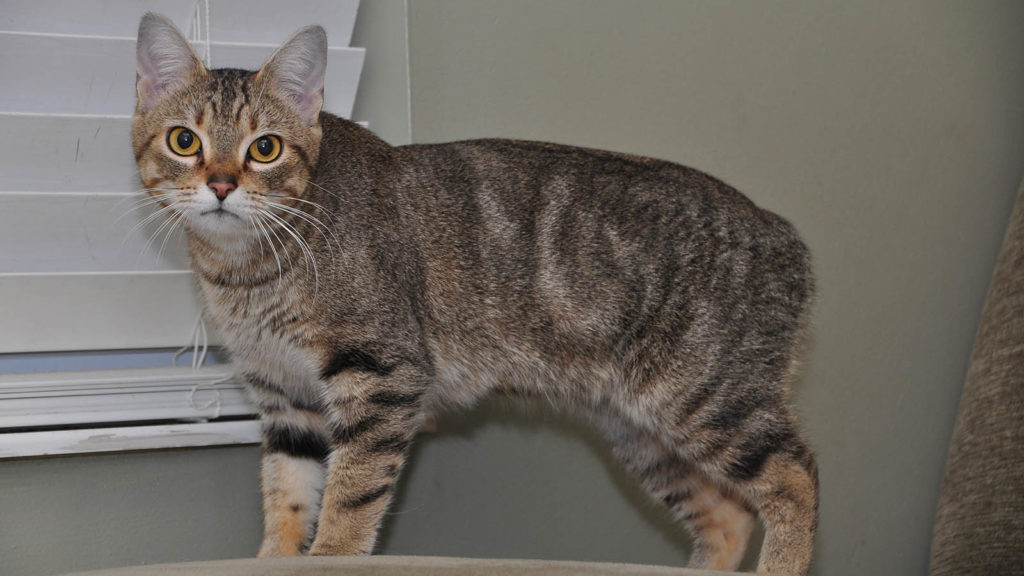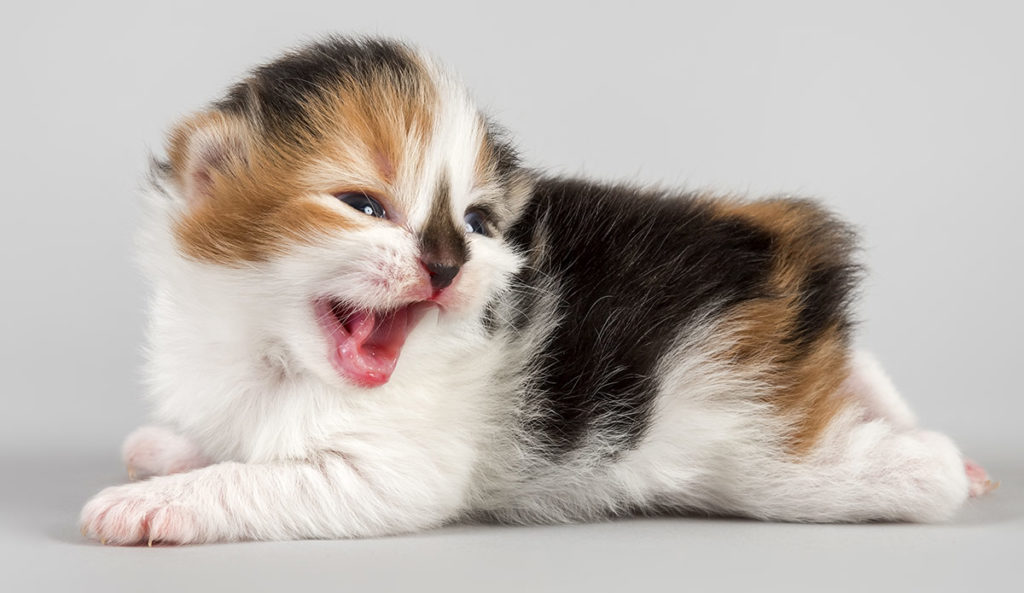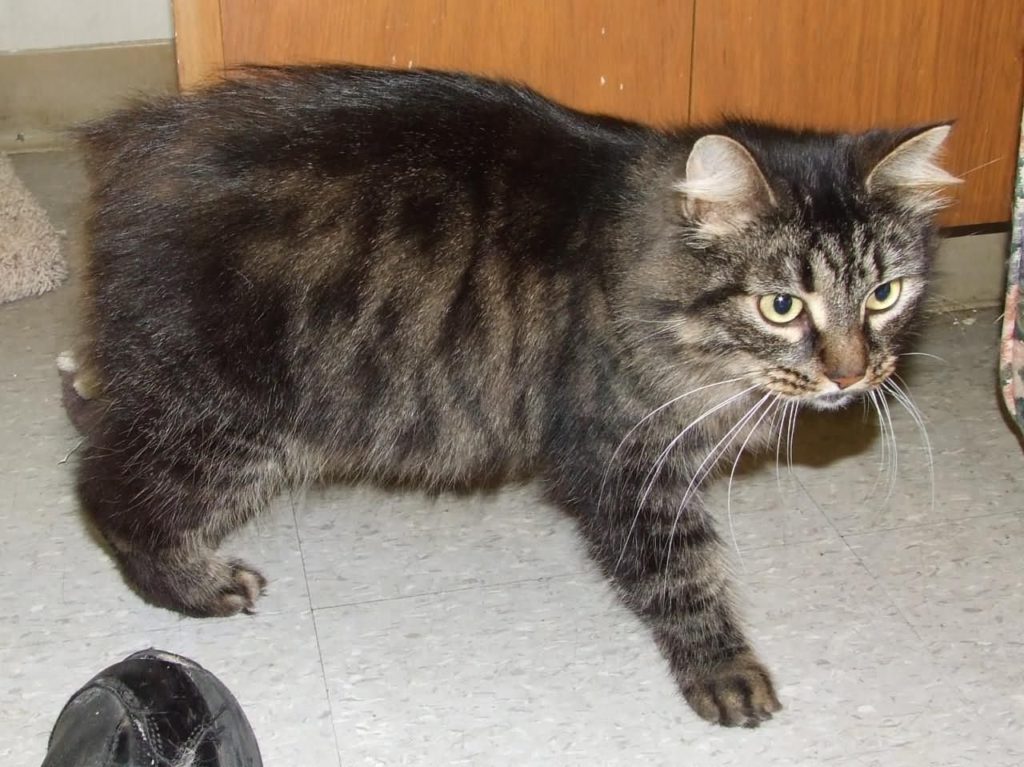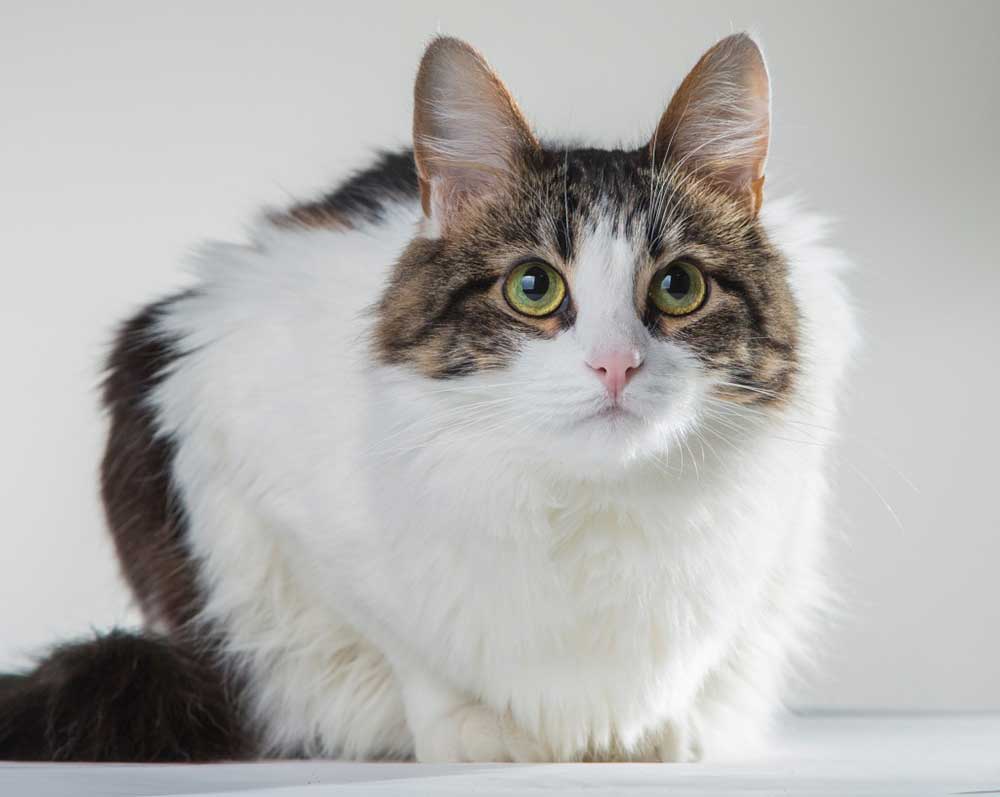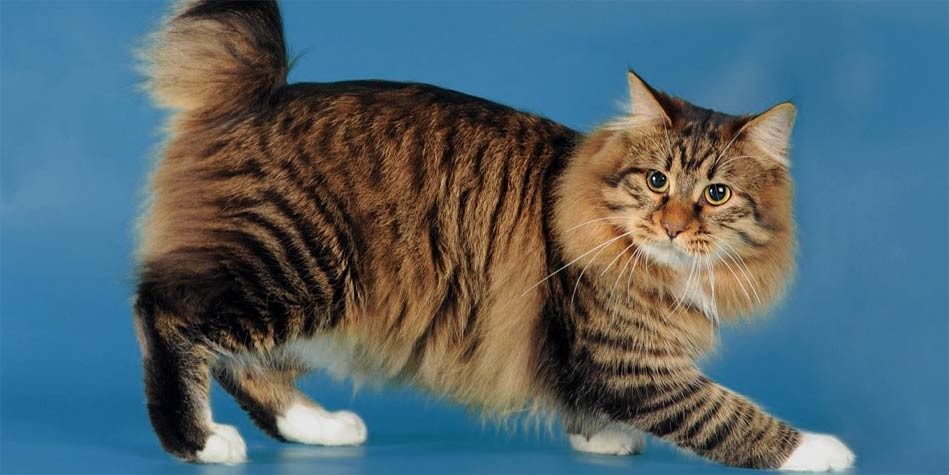The Manx cat is a domestic cat breed (Felis catus) that originated on the Isle of Man and has a naturally occurring mutation that causes the tail to shorten. Although some Manx cats have a stub of a tail, Manx cats are most recognized for being completely tailless. Tailless cats were known as cats from the Isle of Man by the early nineteenth century, hence the name, and they still make up a significant but dwindling proportion of the local cat community.

Taillessness developed on the island as a natural mutation, while legend has it that tailless pet cats were transported there by the water. They are descended from African wildcats (Felis lybica) rather than native European wildcats (Felis silvestris), of which the island has been empty for a long time. A naturally occurring genetic abnormality has resulted in the Manx’s absence of a tail. This, combined with the Isle of Man’s tiny size and geographic isolation, allowed the dominant-gene feature to spread across the population of cats on the island.
The Manx gene became the dominant trait among the island’s cat population because of the island’s tiny size and relative isolation from the mainland, paired with the mutation’s high level of penetration. Manx has been around for at least three centuries, first being documented in 1807 and being written about as a well-established breed.
The Manx was one of the founding breeds of the CFA, which was created in 1904. It was one of the first cats to be shown at some of the first shows in the United Kingdom, and it was one of the first breeds to be recognized by the Cat Fanciers Association (CFA) in 1906. The International Cat Association (TICA) did not acknowledge it until 1979, although it is now recognized by a number of organizations.
Body structure
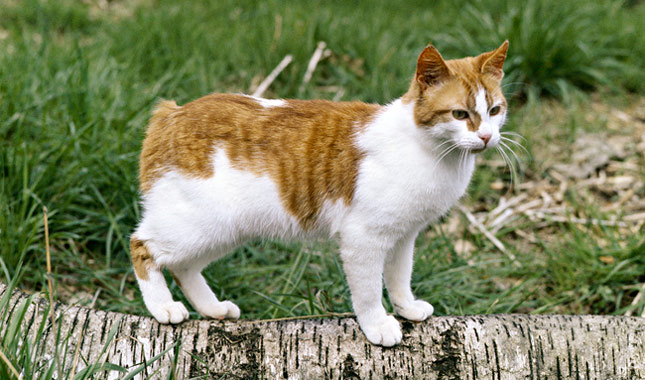
Their heads are round, their eyes are round, their ears are rounded, and their back legs are substantially longer than their front legs, so their rumps sit above their front shoulders as they stand or move, giving them a rounded appearance. In his movements and overall appearance, the Manx has been compared to a rabbit. This cat breed frequently walks in a bunny-hopping manner, with both hind legs moving in unison.
Manx cat fur is thick and double-coated, making them not just healthy shedders but also weather and water-resistant. All-white coats or color-pointed Manx are the rarest, with orange, tabby, and tortoiseshell being the most prevalent.
Behavior
The Manx is a laid-back cat with a lovely disposition. They are faithful to their family groupings, often following their favorite humans about the house, despite having a strong independent tendency. Manx cats are also well-known predators, having served as ratters on ships of various sizes and being sought by farmers for their prey drive and ability to pursue larger prey such as rats and voles.
The breed is believed to be exceptionally clever, lively, and have dog-like behavior. Manx cats, like certain Maine Coons and a few other breeds, are frequently taught to retrieve small thrown things. They may also follow their owners around like puppies, and they are thought to be more capable than other cats of learning simple vocal commands.
Caring
The Manx’s double coat necessitates regular grooming. Brushing your dog’s coat on a daily basis is the most efficient approach to keep loose hair to a minimum and keep it looking smooth and tangle-free. Manx cats shed a lot, especially in the spring and fall. Brush their double coat on a regular basis to keep loose hair at bay. Maintain a clean litter box for him, and make sure he has toys to hunt and scratch on so he doesn’t become bored.

Health
The Manx are typically healthy, but they may be afflicted with certain diseases and ailments, such as:
- Corneal dystrophy
- Arthritis
- Manx syndrome
- Megacolons
They live an average life of 10-14 years.

